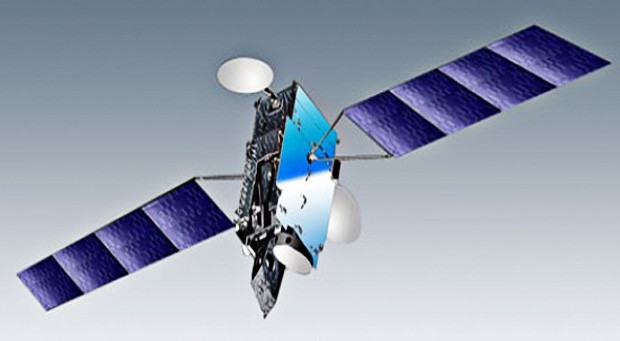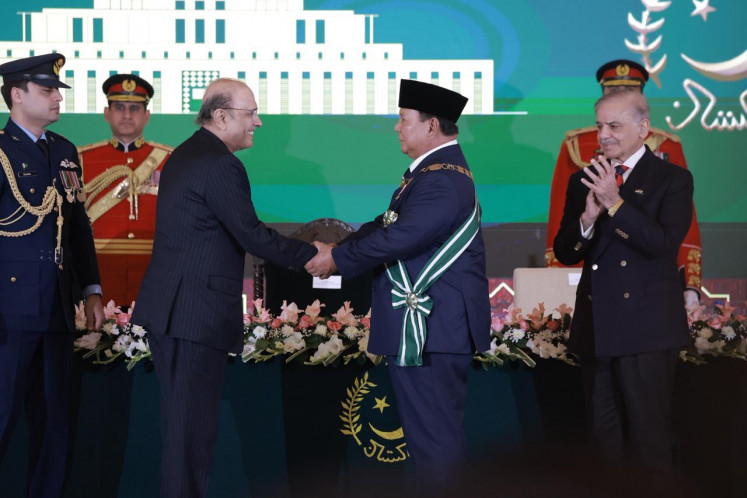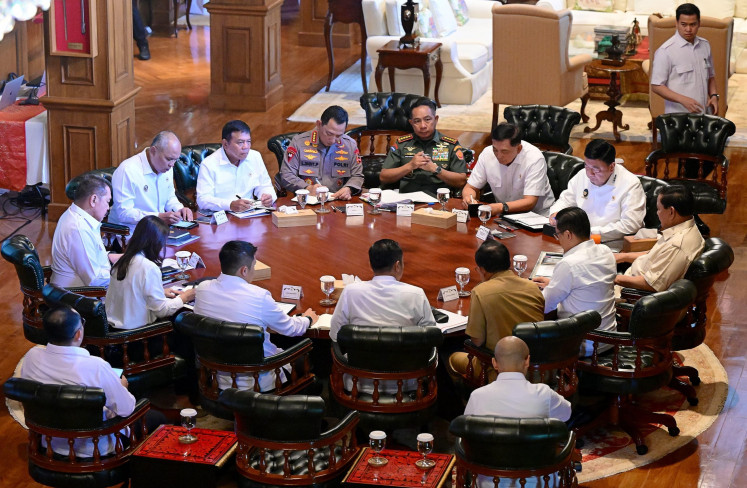Popular Reads
Top Results
Can't find what you're looking for?
View all search resultsPopular Reads
Top Results
Can't find what you're looking for?
View all search resultsIs it time for ASEAN to have a space agency?
Despite the advantages and historical background, progress on outer space activities in the region is rather insignificant. This happens because each member state lacks a sense of regional unity.
Change text size
Gift Premium Articles
to Anyone
By
Jakarta/Surabaya
ASEAN countries have an extensive background in outer space exploration. For decades, Indonesia, Thailand and Vietnam have actively participated in outer space activities. Indonesia pioneered space endeavors in this region as demonstrated by the establishment of the National Institute of Aeronautics and Space (LAPAN) in the 1960s and the Palapa A1 satellite success launch in 1976.
In addition, Thailand became the first country in Southeast Asia to establish a ground-based receiving station in 1971, with the purpose of utilizing data from NASA’s Earth Resources Technology Satellite-1. The highlight of the Southeast Asian space race was Vietnam's participation in the Interkosmos program run by the Soviet Union in 1979, which was a big success. Pham Tuan is the first Asian to participate in space exploration.
ASEAN is blessed with geographical advantages when it comes to utilizing space technology. Southeast Asia is geographically surrounded by seas, where fisheries is a major source of income for the region's inhabitants. Subsequently, ASEAN member states also rely on agriculture for subsistence.
Satellite technology can play a significant role in the production of fisheries and agricultural goods. Using satellite technology to monitor fish movement, fishermen can easily pinpoint fishing locations. This will, of course, propel the economic wheels of the region.
Several ASEAN member states are geographically located below the equator, along the Ring of Fire. Such advantages lead to strategic locations for spaceport development pertaining to Low-Earth Orbit (LEO) or Geostationary Orbit (GSO) satellite launches. Less gravity means less fuel is needed.
Being located in the region of the Ring of Fire increases the likelihood of natural disasters caused by volcanic eruptions. Remote sensing technology can be utilized to lessen the impact of such natural disasters.
Despite the advantages and historical background, progress on outer space activities in the region is rather insignificant because each member state lacks a sense of regional unity. As an example, certain ASEAN nations are busy pursuing bilateral cooperation with non-ASEAN counterparts rather than with fellow group members. Intra-ASEAN cooperation in the space sector is absent because there is no forum at the regional level to discuss space-related issues.
The Sub-Committee on Space Technology and Applications (SCOSA), a subcommittee of the ASEAN Committee on Science, Technology, and Innovation (COSTI), is in charge of space technology and activities at the regional level. The SCOSA's 2016 to 2025 priorities include the utilization of satellites for geoinformatics, the development of micro and nanosatellites and space technology implementation.
There are strong grounds to consider the establishment of an ASEAN or regional space agency on the basis of regional cooperation. At present five ASEAN member states, namely Brunei Darussalam, Cambodia, Laos, Myanmar and Timor Leste, are not members of the United Nations Committee on the Peaceful Uses of Outer Space (UNCOPUOS). Brunei Darussalam, Cambodia, Myanmar and Timor-Leste have not even signed the Outer Space Treaty of 1967, billed as the magna carta of space law.
Taking into account the current ASEAN member states’ capabilities in space activities, it appears the scope of regional cooperation should be limited to primary needs, namely satellite utilization.
ASEAN countries are not yet at the stage of furthering space exploration such as space mining. Therefore, the fact that five ASEAN states are not the parties to the UNCOPUOS should not hinder efforts to realize regional cooperation.
The regional space agency establishment could instead become a catalyst in encouraging the countries to ratify the Outer Space Treaty of 1967 and join the UNCOPUOS. The shooting of Chinese balloons by the United States a few months ago shows that the UNCOPUOS plays an essential role in determining the delimitation of airspace and outer space. This was merely an academic debate a decade ago, but now it has come to reality.
The establishment of an independent regional space agency is not new. The European Space Agency (ESA) and the Arab Satellite Communications Organization (ARABSAT) are two long-standing examples. Reflecting on the ESA experience, agency independence implies that the organization is not hierarchically subsumed by the European Union, but remains bound through a number of cooperation agreements. One of the examples is the Galileo Program pertaining to the global navigation satellite system that went live in 2016.
Financial independence can be achieved by an ASEAN space agency. Learning from ARABSAT and the ESA both funding sources directly come from each member state’s space agency, rather than from the Arab League or the European Union. The ASEAN space agency can choose the funding model of the ESA.
The formation of an ASEAN space agency can provide Southeast Asia with more and fair access to space activities. It could create two categories of space programs, namely mandatory and voluntary. The design, launch and operation of satellites should comprise the primary interests of all ASEAN member states.
At the next stage, a further objective is to promote autonomy in conducting space activities in the region. Programs involving biomedical research and microgravity, for example, will only be implemented for those who are interested. The ASEAN space agency could play its role in facilitating data exchange and technology transfer.
This year Indonesia takes the helm of ASEAN. This is an opportunity for the biggest ASEAN member to encourage further outer space cooperation in the region. Indonesia’s vast experience in outer space activities, including its active role at UNCOPUOS, is a basic capital. The establishment of an ASEAN space agency shall lead the region to more opportunities to advance science, technology and eventually the people's welfare.
***
Ridha Aditya Nugraha teaches Air and Space Law Studies in Prasetiya Mulya University. Yaries Mahardika Putro is a lecturer of Air and Space Law at the Faculty of Law in Surabaya University.











